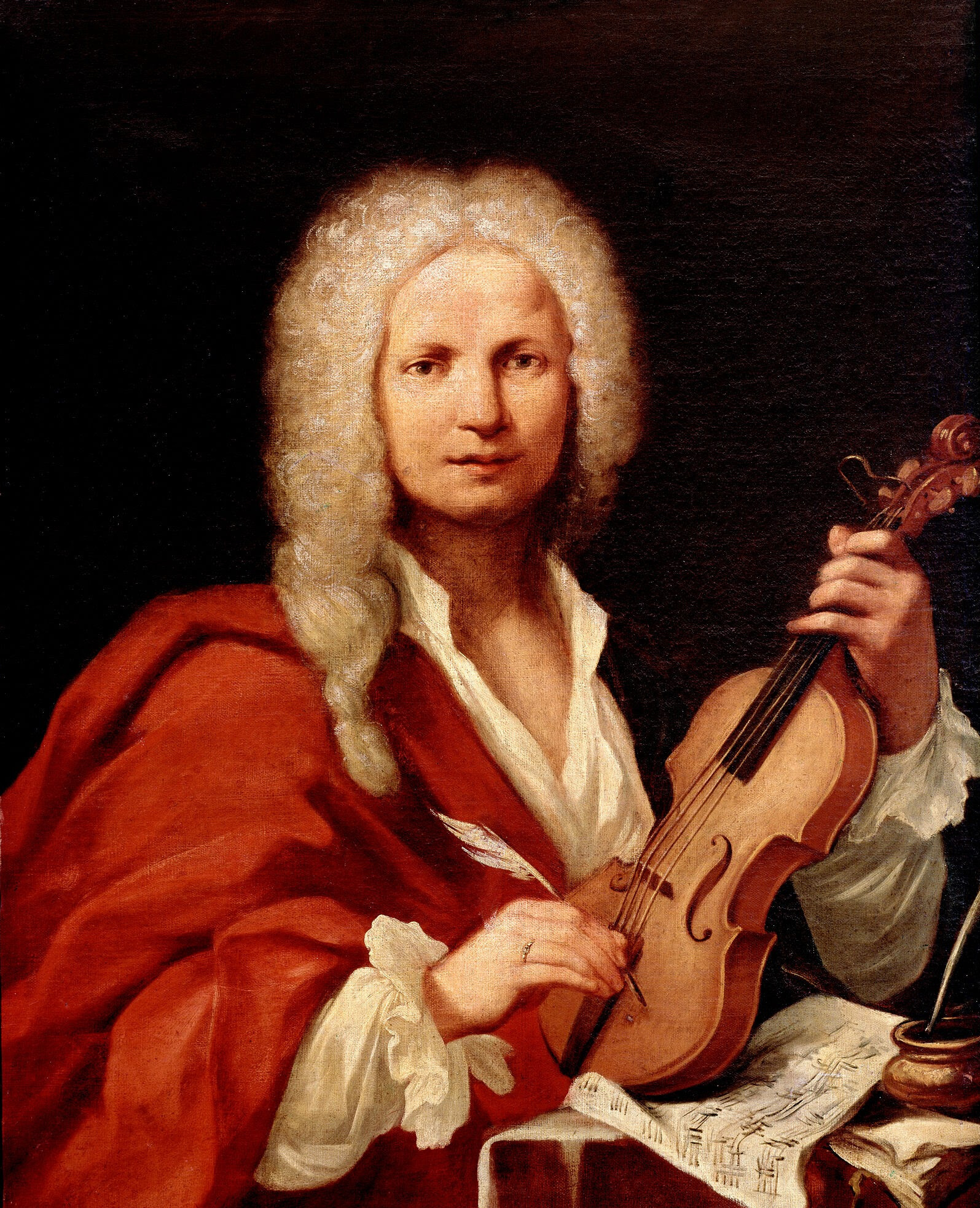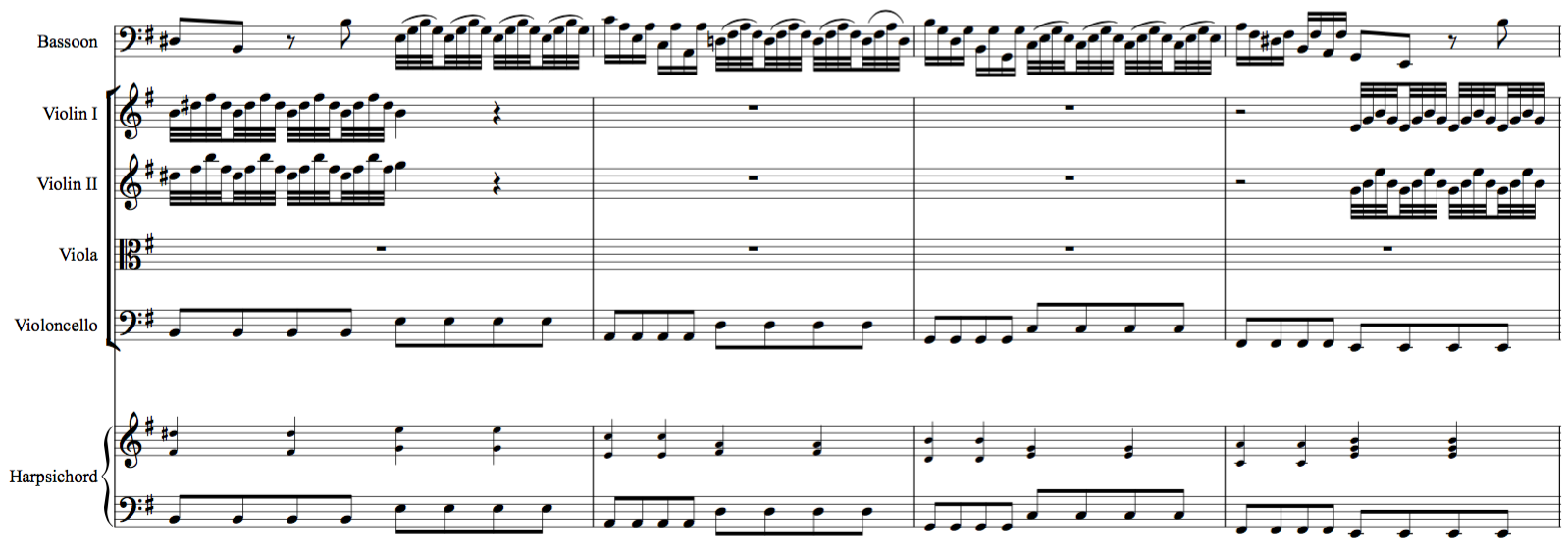Antonio Vivaldi
The Baroque Period
Public domain, via Wikimedia Commons
Like Monteverdi, Antonio Vivaldi was a Venetian priest who became one of the most important composers of the Baroque Period. His father was a violinist at St. Mark's Basilica in Venice, and taught his son to play as well. He started studying to become a priest as a teenager and was ordained at the age of 25. His nickname was "Il Prete Rosso" (the Red Priest) due to the color of his hair. However, he soon stopped saying mass, possibly due to a severe case of asthma, and instead spent most of his career working at the Pio Ospedale della Pietà (Divine Mercy Hospital), which cared for the sick and educated orphaned children. Part of this care included a full-time musical staff funded by the Venetian Republic. Vivaldi worked there for nearly thirty years as a teacher and composer. Many of his compositions were written for the children at the Ospedale.
His compositional style was highly important to the development of the solo concerto, which features a skilled soloist performed called the virtuoso backed up by a full orchestra, called the ripieno ("stuffing.") The ripieno generally played a ritornello, or a theme that recurs throughout the piece in between solo interludes. This structure lent itself perfectly for Vivaldi to showcase his best students, or even perform himself, while still giving an important role to the rest of the ensemble. It is for these concerti that Vivaldi is primarily known, although he also wrote sacred music and opera. His most famous work by far is a series of four concerti called I Quattro Stagioni (The Four Seasons), an early example of the programmatic music which would become popular centuries later.
A signature of Vivaldi's style was the use of the sequence, where the chords progression moves down the circle of fifths (or up the circle of fourths.) Due to the physical limitations of meantone temperament (not to mention the patience of the audience), a sequence will usually repeat just a few times before returning to the original key, as seen in the excerpt from his Bassoon Concerto in E Minor.

Vivaldi's fame became so great that in 1728 he met Holy Roman Emperor Charles VI, who was a great admirer. Eventually, he invited Vivaldi to come to Vienna, but the emperor died shortly before his arrival and Vivaldi, without a patron, died a year later.
